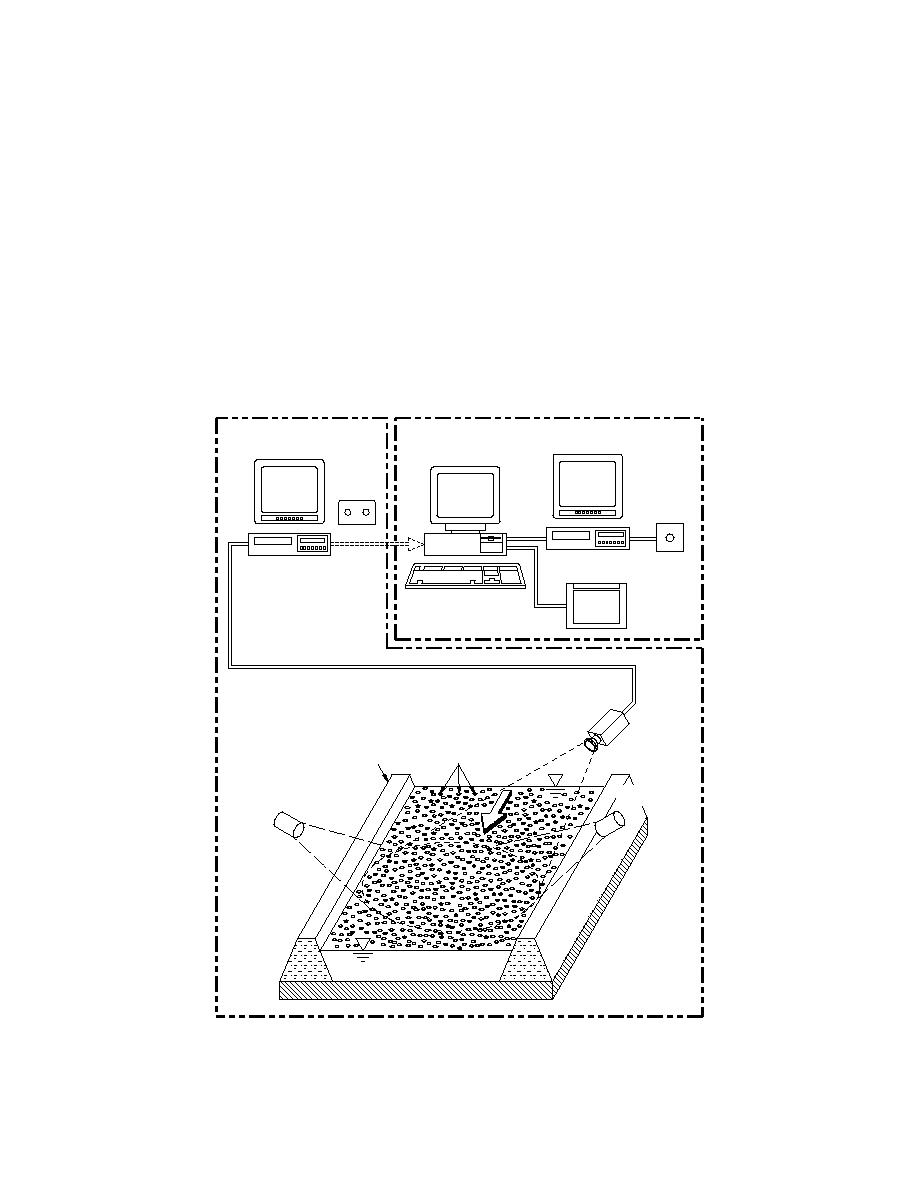
bathymetry makes the model more representative
gation chart. The surface of the bed was fixed
of the MississippiMissouri confluence. The
using cement, and was painted white to facilitate
bathymetry used for the model did not include,
use of the PIV method (Fig. 10). Border ice was
however, a large dune, which presumably formed
replicated using strips of sheet metal bent and
during the 1993 flood at the outflow of the
placed to block off the channel to simulate the for-
Missouri. Details on the dune were not available
mation shown in Figure 8.
at the time of testing. The addition of border ice,
Ice drifting from the Missouri River was simu-
formed over a large point bar along the west bank
lated using 3-mm-diameter polyethylene beads,
of the confluence, allows the model (in plan at
which have a specific gravity of 0.90, slightly less
least) to more closely replicate the confluence con-
than that of freshwater ice (0.92). For a horizontal
dition illustrated in Figure 9.
scale of 1:500, the beads approximately replicated
The alluvial bed bathymetry between the sheet
1.5-m-diameter pans of ice in the Missouri River.
metal walls was replicated using a bed of coarse
The beads, which are black, are readily visible
sand (1.2 mm average diameter) adjusted to simu-
against the white channel bed, and were fed into
late the channel bathymetry data from a 1972 navi-
the model Missouri River at a controllable rate
POST-PROCESSING
8mm
cassette
tape
Controller
VCR
VCR
PC with
Printer
frame-grabber
DATA COLLECTION
CCD
camera
River
Floating
bank
particles
Halogen
lamp
Halogen
lamp
Figure 11. Setup of the PIV system used in this study.
16



 Previous Page
Previous Page
